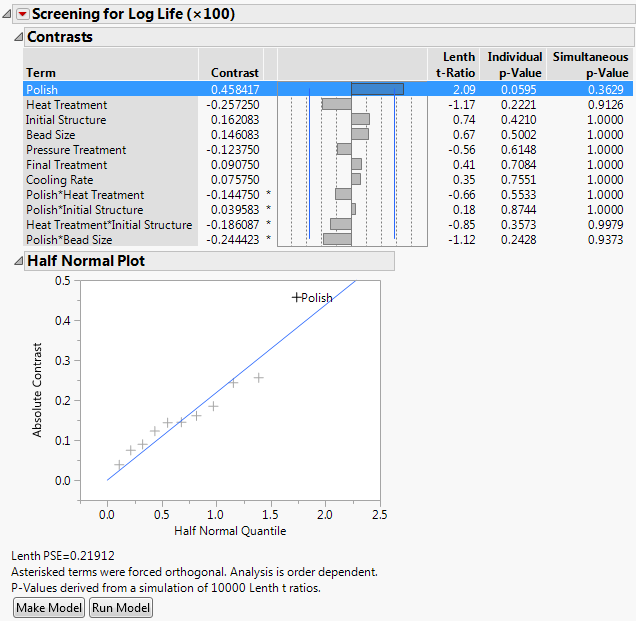Example of a Plackett-Burman Design Analysis
Use the Fit Two Level Screening platform to analyze a seven factor Plackett-Burman design.
Plackett-Burman designs are an alternative to fractional-factorial screening designs. Two-level fractional factorial designs must, by their nature, have a number of runs that are a power of two. However, Plackett-Burman designs exist for 12-, 24-, and 28-run designs.
A Plackett-Burman design with 12 runs is used to investigate the importance of the seven factors. The response is 100 × log(lifetime). (The sample data table also contains four terms that were used to model error, but those terms are not used in this analysis.)
1. Select Help > Sample Data Folder and open Weld-Repaired Castings.jmp.
2. Select DOE > Classical > Two Level Screening > Fit Two Level Screening.
The launch window is populated based on the column properties. Log Life (x100) is the response Y.
The seven factors Initial Structure, Bead Size, Pressure Treatment, Heat Treatment, Cooling Rate, Polish, and Final Treatment are specified for X.
3. Scroll to the bottom of the X window. Select ε1, ε2, ε3, and ε4, and click Remove.
4. Click OK.
Figure 11.6 Screening Report for Weld-Repaired Castings.jmp
The only significant effect identified is Polish. Note that asterisks mark four terms, indicating that they are not orthogonal to the effects preceding them. The contrast values obtained for these effects are after orthogonalization. As a result, these estimates do not match estimates obtained from a corresponding regression analysis. You can use the Run Model button to fit the single-factor model.
